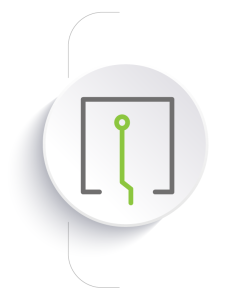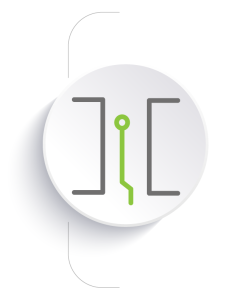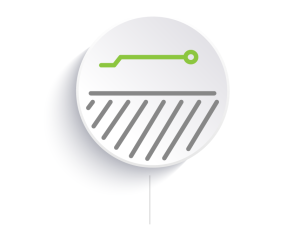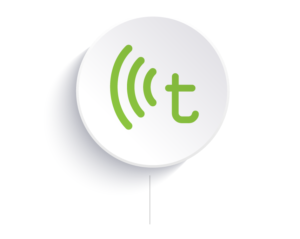Optical fiber is a data transmission technology using light that enables very fast and stable communication over long distances. Thin glass or plastic fibers that conduct light pulses are used for this purpose. Thanks to this, it is possible to achieve data transmission speeds of hundreds of gigabits per second, which is incomparably faster than traditional wired methods. Fiber optics are used in various fields, from telecommunications to medicine and the entertainment industry.

Fiber optics
In addition to IT and telecommunications services, we also offer optical fiber measurements. We weld optical fibers and repair optical fibers and optical fiber tracks . In our work, we use professional equipment of the best brands, and thanks to our knowledge and experience, our employees will perform detailed measurements and analysis of optical paths.
Types of fiber optic cables

Universal cables
Universal fiber optic cables are a versatile solution used both indoors and outdoors, combining the features of cables designed for specific environmental conditions . They are exceptionally resistant to electromagnetic interference and are characterized by the ability to transmit data at very high speeds, which makes them suitable for use in various industries, including telecommunications and ICT. Made of glass fibers and plastic admixtures, these cables are irreplaceable in CATV and CCTV monitoring networks, LAN networks, telecommunications networks, as well as in FTTH, FTTx and GEPON networks. They are available in various configurations, from single fibers to multi-fiber sets, which allows for flexible adaptation to the needs of the project and network infrastructure. Their universality makes them appreciated by cable operators and Internet providers, offering reliability and efficiency in the most demanding environments.

Internal cables
Indoor fiber optic cables are a key element of network infrastructure, enabling fast and reliable data transmission in buildings . Made of glass fibers and plastics, they are resistant to electromagnetic interference and allow data to be transmitted at high speed. Their use is versatile: from telecommunications networks, through CCTV monitoring, to advanced LAN networks and FTTH systems. Various types of cables are available, including universal, armored and indoor, which can be tailored to the specific needs of the project.

External cables
Outdoor fiber optic cables are a key element of telecommunications infrastructure, enabling fast and reliable data transmission over long distances . Primarily used to build wide-area networks, such cables often contain single-mode fibers that provide high throughput and long transmission distances without the need for signal amplification. Their design is specially adapted for external installation, with a central strength element and fiber tubes, which increases resistance to mechanical damage. Additionally, they are sealed to prevent water penetration and, in some cases, reinforced with aramid or glass fibers, or armored with steel wires, which provide additional protection against external factors.

Self-supporting cables
This is a modern solution used in the construction of telecommunications networks. They are characterized by high resistance to weather conditions, which makes them ideal for outdoor applications, especially in hard-to-reach areas. Thanks to their design, these cables can be mounted directly on power or lighting poles, eliminating the need to build additional supporting infrastructure.

Underground cables
It is a key element of telecommunications infrastructure, enabling fast and reliable data transmission over long distances. They are designed to be placed directly in the ground or telecommunications sewage system, which ensures their protection against external factors. Thanks to the use of special coatings, such cables are resistant to the harmful effects of atmospheric and mechanical conditions, which is necessary to maintain the continuity and quality of connections.
Fiber optic measurements
Measurement of optical fibers using the OTDR reflectometric method is a key process in the diagnosis of telecommunications systems . This method allows for precise localization of places of fiber optic signal loss, which is necessary to maintain high quality data transmission. The measurement process begins by generating a series of light pulses, which are then sent to the fiber under test. These pulses have a specific width and wavelength, which are adapted to the specific section of the measured section.
Detection of reflected pulses allows for the analysis of phenomena occurring inside the fiber. Each reflection, whether caused by a minor discontinuity or more serious damage, changes the characteristics of the transmitted pulse. By analyzing these changes, it is possible to determine the location and type of abnormalities.
OTDR produces a graph that shows the optical power drop as a function of distance from the pulse source. This plot is often called a reflectometric trace. The measurement result is given on a logarithmic scale, which makes it easier to identify places with high signal loss, even if they are distributed over long cable sections.
The application of the OTDR method is wide and includes not only locating damage, but also checking the quality of fiber optic splices and assessing the general condition of the fiber optic infrastructure . This makes it possible to quickly and effectively manage fiber optic networks.
Equipment and accessories we use
- fiber optic cables,
- various types of patch cords (standard, individual according to customer needs),
- pigtails and adapters of various types,
- fiber optic distribution boxes (19″, wall-mounted, hermetic, etc.),
- cable storage racks and boxes,
- fiber optic joints.

Fiber optics Krakow
Are you looking for a professional fiber optic installation company? We invite you to use our services. We offer comprehensive solutions for measuring and welding fiber optic cables
Our company has many years of experience and highly qualified staff who will provide you with professional advice, design, installation and service of installations.
We offer:
- Technical advice and selection of appropriate components
- Professional installation measurements using the (OTDR) method
- System configuration and startup
If you are looking for a professional fiber optic installation company, please contact us . We will be happy to answer your questions, present an offer and arrange a visit to your company. Don't delay, call or write to us today!
What is optical fiber?
Optical fiber is a type of cable that uses light to transmit data at very high speeds. It consists of a core, usually made of very clear glass or plastic, through which the light travels, and a cladding that provides total internal reflection of the light and allows it to travel through the cable.
How does optical fiber work?
Light in optical fiber does not move in a straight line, but is reflected from the core walls, which allows for efficient data transmission over long distances with minimal signal attenuation.
What types of optical fibers are there?
There are two main types of optical fibers - single-mode and multi-mode. Single-mode fiber optics have a narrow core and can transmit data over longer distances, while multi-mode fiber optics have a wider core and are effective over shorter distances.
What are the advantages of using optical fiber?
Fiber optics offer many benefits, such as low latency, fast file downloads and uploads, as well as high resistance to external interference, which ensures a stable Internet connection.
